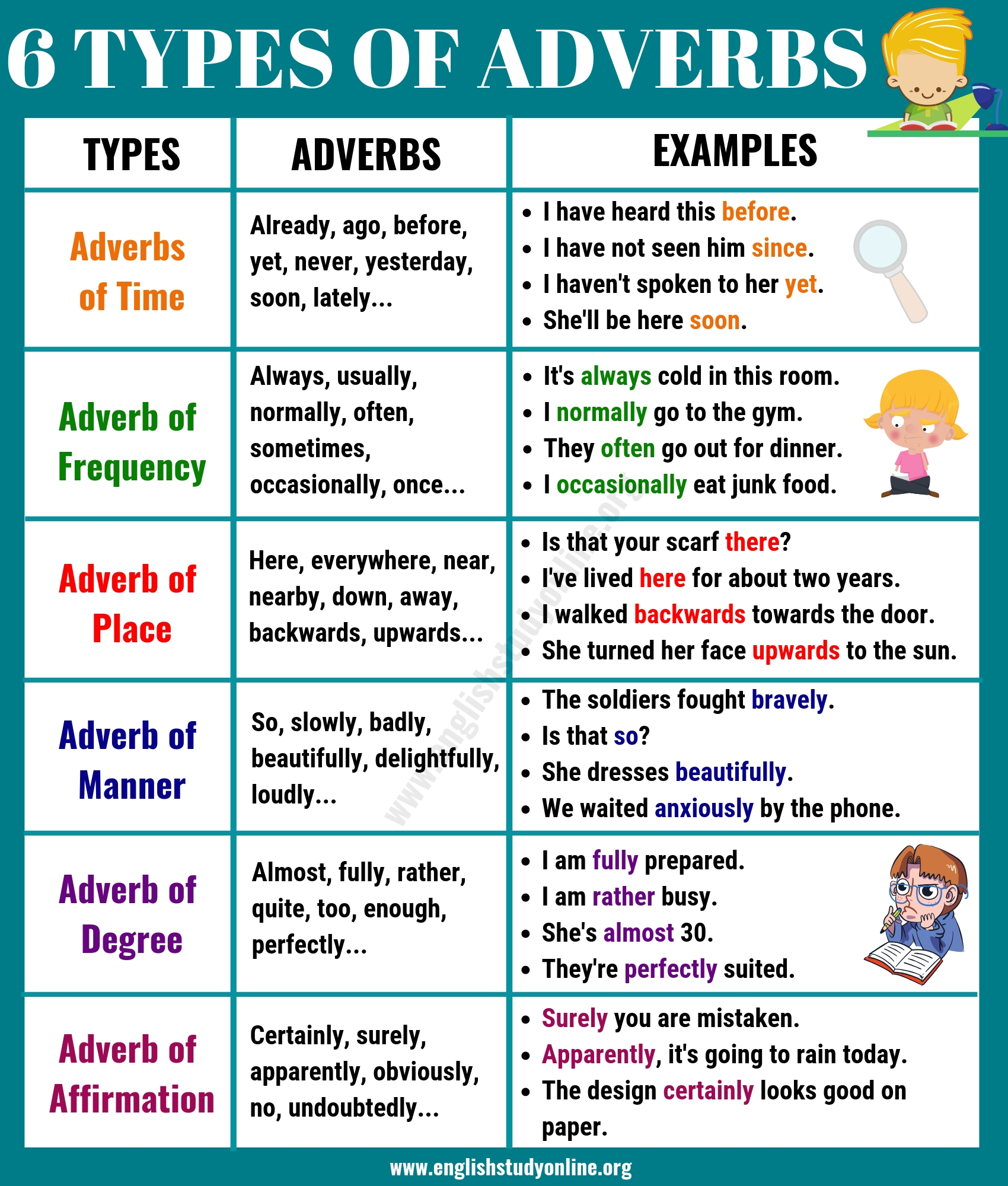
6 Basic Types of Adverbs Usage & Adverb Examples in English English
Adverbs of time usually occur at the end of a clause. They appear after the main verb. Subject + main verb + adverb of time e.g. I went swimming today. The position of the adverb does not change in a negative sentence: Subject + main verb + adverb of time e.g. I didn't swim today. Adverbs of time can also be placed after the object.
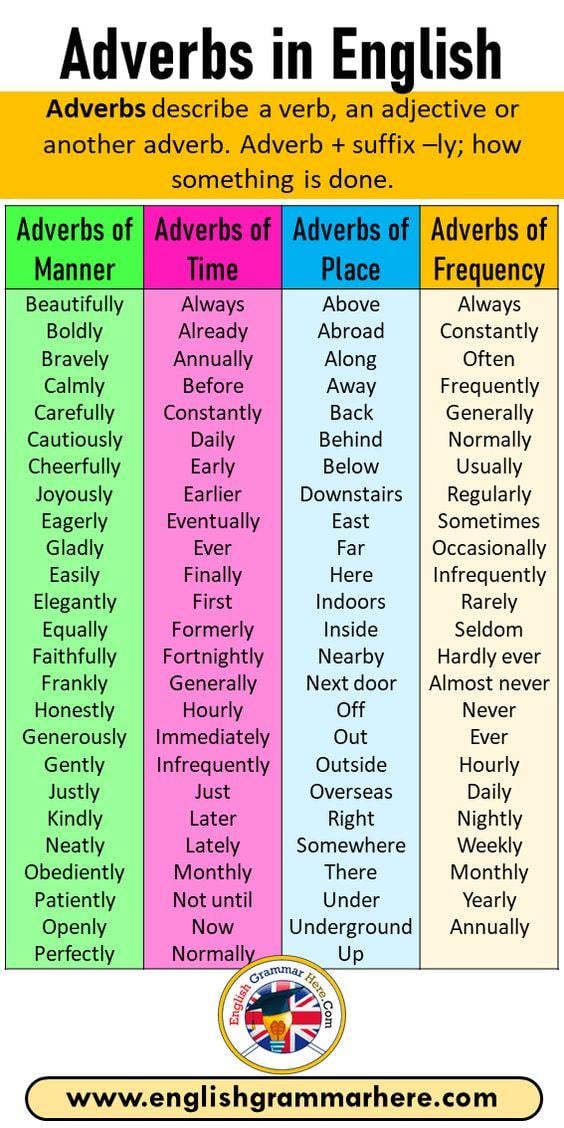
Adverb Of Time / Adverbs of Time Studyladder Interactive Learning Games
Adverbs of Time List. This is a list of common single-word time adverbs. Adverbs of time mainly modify verbs and tell us when something happens. points of time (definite) now; then; today; tomorrow; tonight; yesterday; frequency (definite) annually; daily; fortnightly; hourly; monthly; nightly; quarterly;

EduBlog EFL Adverbs of time.
Some common examples of adverbs of time include "now", "soon", "yesterday", "today", "tomorrow", "always", "never", "often", "rarely", "sometimes", "frequently", "occasionally", and "daily". Adverbs of time can be placed at the beginning, middle, or end of a sentence, depending on the intended.
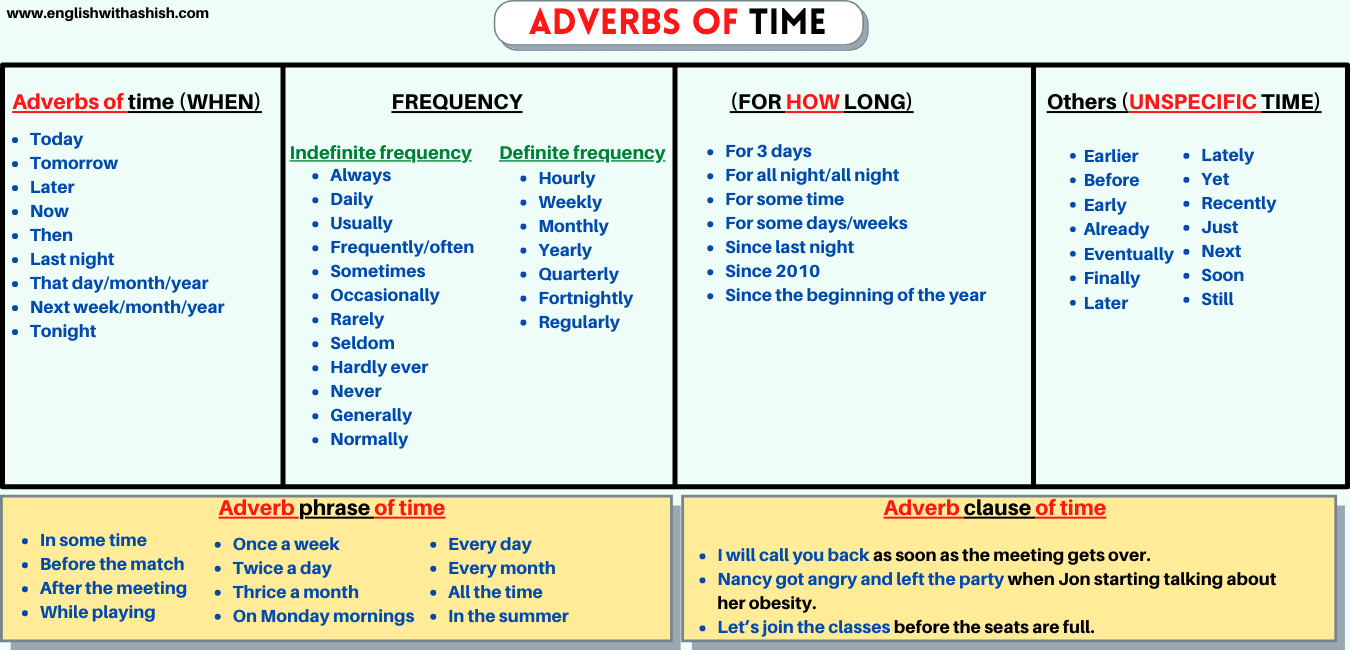
ADVERBS OF TIME types, examples and positions (A free guide)
What Are the Adverbs of Time? An adverb of time is a word that modifies or describes a verb, indicating when an action or event occurs. In other words, it provides information about the timing, frequency, duration, or sequence of an action in relation to time. Adverbs of time help answer questions such as "when," "how often," or "how.

Different AdverbsAdverbs of (Time, Place, Manner, Degree, Frequency
Order of adverbs of time. English is a very organized language. All parts of the sentence in English know their place 🙂. The adverbs of time also have their place and their order in an English sentence. If we use more than one adverb of time together, then we use them in this order: Adverbs of time that answer the question How long.
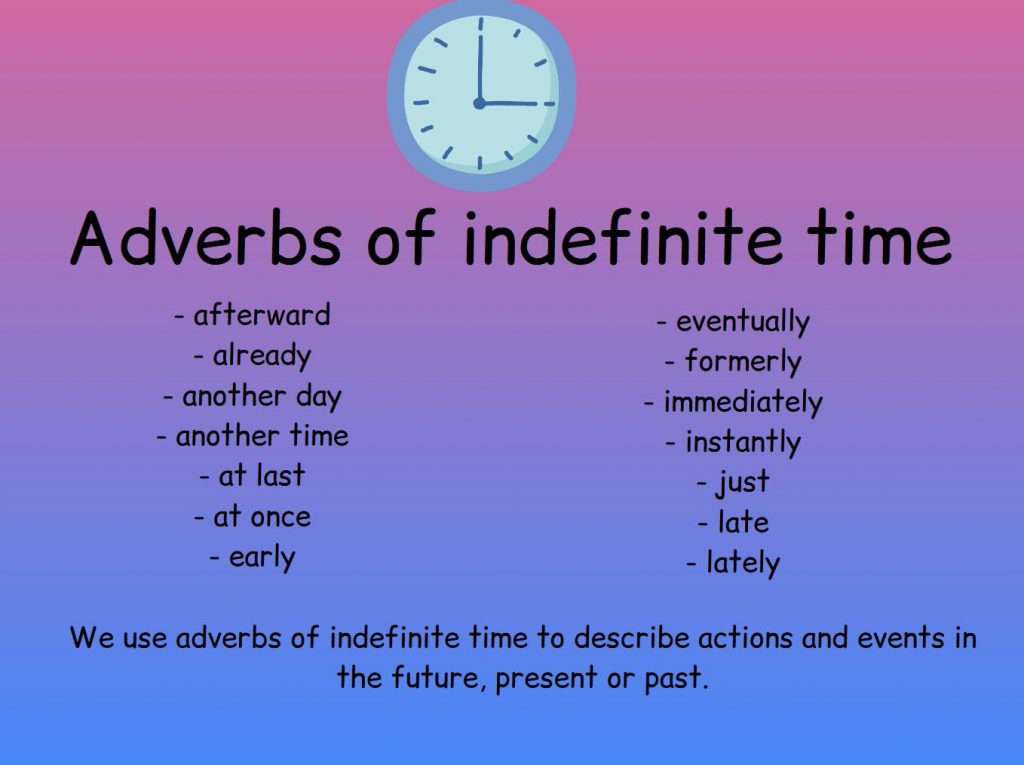
Adverbs Of Time Rules And Usage Top English Grammar
Adverbs of time modify as well as add sense to a phrase by indicating when, how frequently, and also how long an event occurred. Based on what the adverb informs us, they have a typical position in a sentence. An adverb of time is an adverb (often or daily) that defines when a verb's action occurs. It is also known as a temporal adverb.
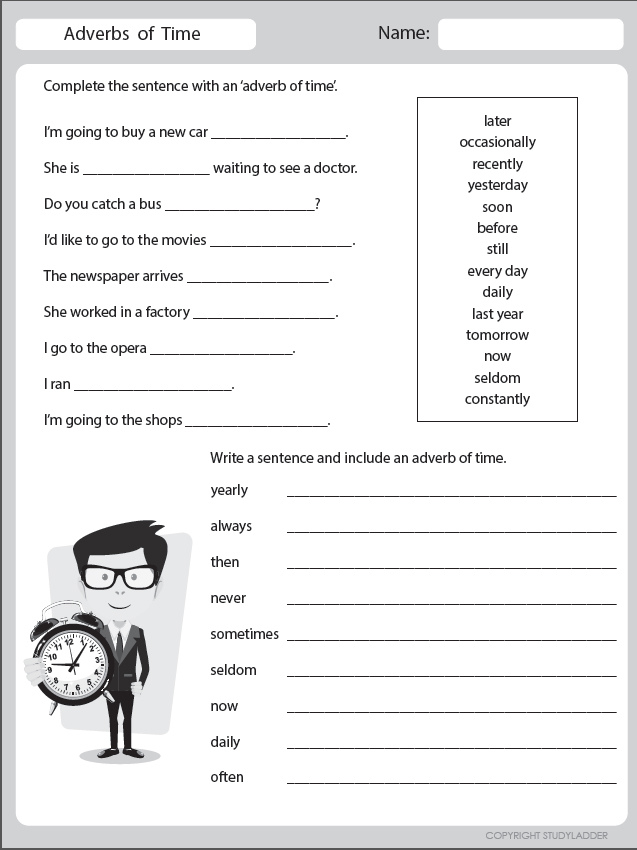
Adverbs of Time Studyladder Interactive Learning Games
Adverbs of time are a common part of English grammar and are used to describe when something happens. They can be used to refer to any point in time, from the past, to the present, to the future. There are several different types of adverbs of time, which are used to talk about different points in time. Time expressions can also be used with.

ADVERBS OF TIME types, examples and positions (A free guide)
Adverbs of time that express an exact number of times the action happens usually work best at the end of a sentence. For example: The newspaper arrives daily. They go out to dinner weekly. Our family goes on an outing monthly. When using more than one adverb of time in a sentence, use them in the following order: 1.

Adverbs Of Time, Definition and 51 Example Words Lessons For English
Adverbs of time. Elementary. 20 mins. Adverbs. Adverbs of time tell us when an action happened, but also for how long, and how often. Adverbs of time are invariable. They are extremely common in English. Adverbs of time have standard positions in a sentence depending on what the adverb of time is telling us.

Adverbs Of Time Rules And Usage Top English Grammar
Examples of Adverbs of Time. Adverbs of time come with specificity in regard to how an action is occurring, has occurred, or will occur. Examples of adverbs of time are: "Yesterday". "Today". "Tomorrow". This covers a broad range of adverbs from those that refer to a particular moment (i.e. now) to adverbs that refer to the.
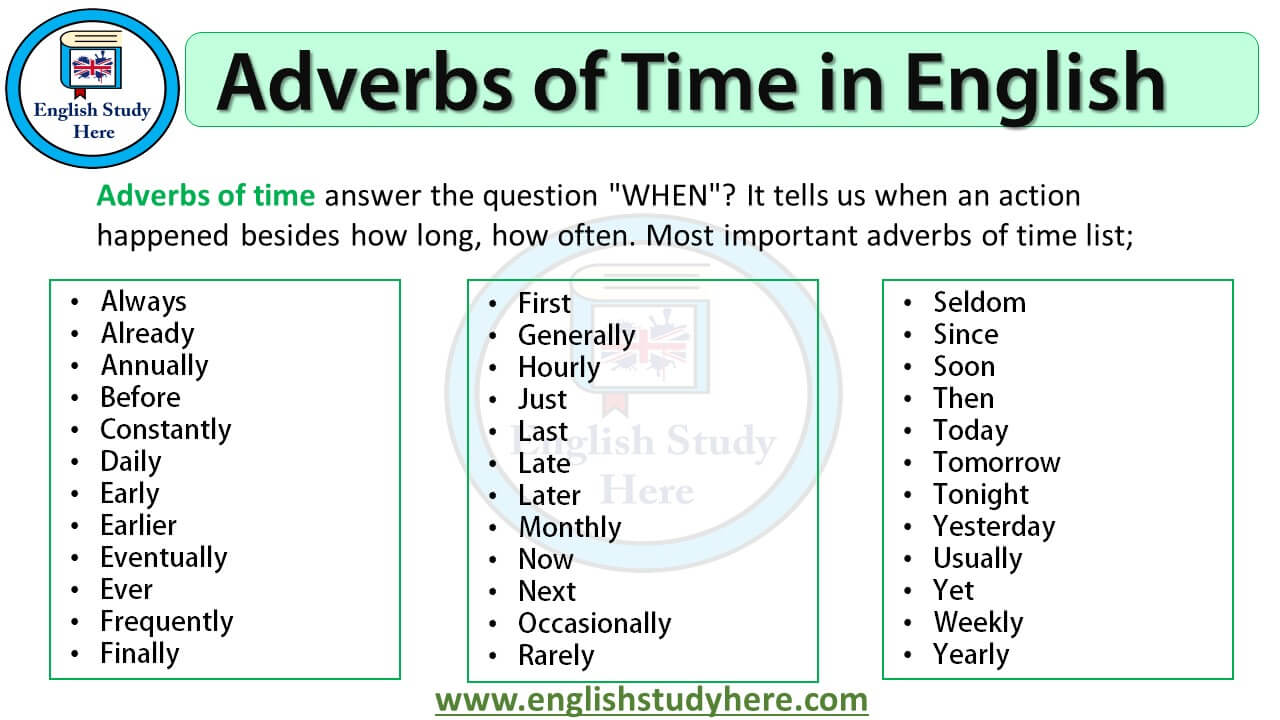
Adverbs of Time in English English Study Here
Adverbs of time are meant to denote when exactly an action is taking place. Learn all about how adverbs of time are used, their meaning and definition in this article. You can also take a look at the examples and the adverbs list given. Table of Contents. What Is an Adverb of Time? Definition of Adverb of Time; Examples of Adverbs of Time

Adverbs Of Time Using and Examples in English English Grammar Here
Adverbs of time tell us when an action happened, but also for how long, and how often. Adverbs of time are invariable. They are extremely common in English. Adverbs of time have standard positions in a sentence depending on what the adverb of time is telling us. Adverbs that tell us when Adverbs that tell us when are usually placed at the end of the sentence.

Adverb Of Time / Types Of Adverbs And Adverb Word Order Olly Hyde
Adverbs of time modify verbs, adjectives or other adverbs; they usually answer the question 'when?' For example: Soon, it will be sunset. We go there often. Download FREE teacher-made resources covering 'Adverb of Time' View FREE Resources . Related Searches.

Adverb Of Time Examples Adverbs of Frequency In this chapter the
Adverb of Time. In English grammar, an adverb of time is a word or a phrase that modifies a verb, expressing when or for how long the verb action occurs. An adverb of time, as the name suggests, indicates the time, duration, or frequency of the verb action. In this article, we will discuss the definition, types, examples, and the use of the.

Adverbs of Time English vocabulary, Adverbs, Writing words
An adverb is a word that can modify or describe a verb, adjective, another adverb, or entire sentence. Adverbs can be used to show manner (how something happens), degree (to what extent), place (where), and time (when). Adverbs are usually formed by adding -ly to the end of an adjective (e.g., "quick" becomes "quickly"), although there.
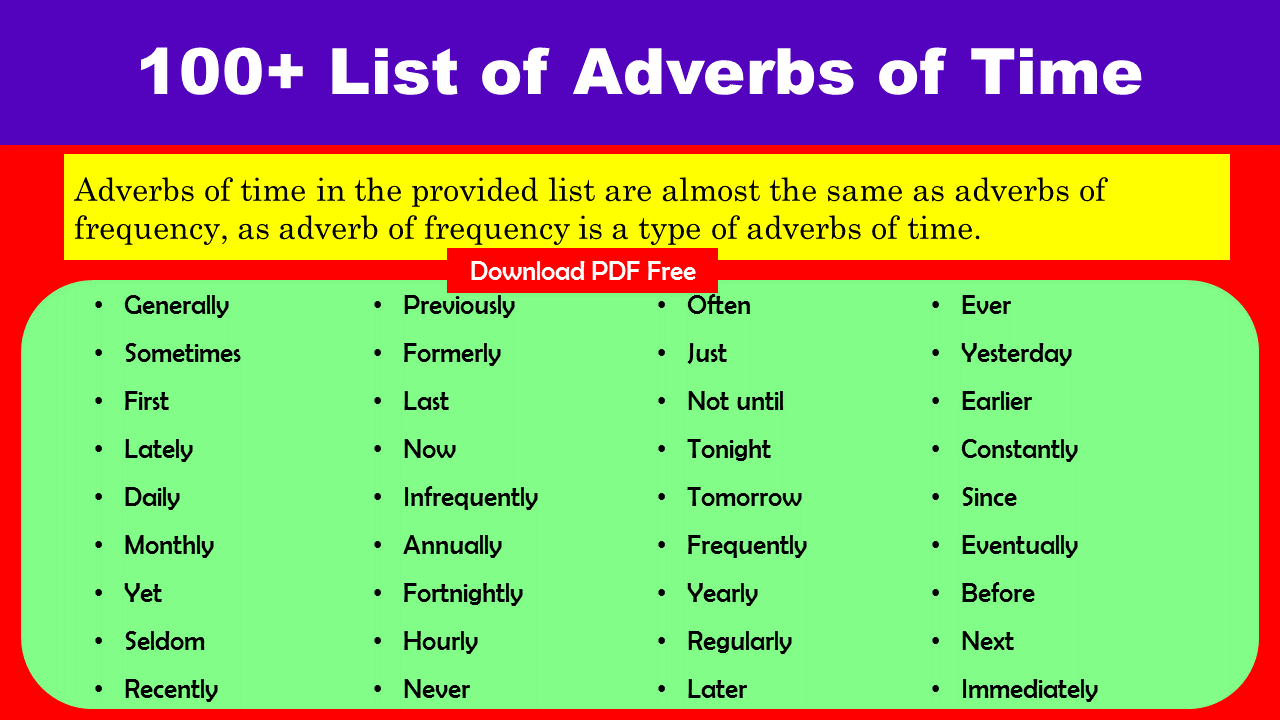
adverb of time, Adverb of Time Examples, and Definition
Adverbs of time tell us at what time ( when) or for how long ( duration) something happens or is the case. There is also a specific category of time adverbs that describe frequency, or how often something happens or is the case; however, their usage is a bit more complex, so we will examine those in a separate section.